
Mount Vernon is an American landmark and former plantation of George Washington, the first President of the United States, and his wife, Martha. The estate is on the banks of the Potomac River in Fairfax County, Virginia. It is located south of Washington, D.C. and Alexandria, Virginia and is across the river from Prince George's County, Maryland.

Frank Heyling Furness was an American architect of the Victorian era. He designed more than 600 buildings, most in the Philadelphia area, and is remembered for his diverse, muscular, often unordinarily scaled buildings, and for his influence on the Chicago architect Louis Sullivan. Furness also received a Medal of Honor for bravery during the Civil War.

Charles Keck was an American sculptor from New York City, New York.
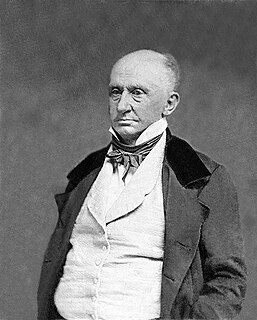
George Washington Parke Custis was an American plantation owner, antiquarian, author, and playwright. His father John Parke Custis was the stepson of George Washington. He and his sister Eleanor grew up at Mount Vernon and in the Washington presidential household.

Woodlawn is a historic house located in Fairfax County, Virginia. Originally a part of Mount Vernon, George Washington's historic plantation estate, it was subdivided in the 19th century by abolitionists to demonstrate the viability of a free labor system. The address is now 9000 Richmond Highway, Alexandria, Virginia, but due to expansion of Fort Belvoir and reconstruction of historic Route 1, access is via Woodlawn Road slightly south of Jeff Todd Way/State Route 235. The house is a designated National Historic Landmark, primarily for its association with the Washington family, but also for the role it played in the historic preservation movement. It is now a museum property owned and managed by the National Trust for Historic Preservation.

George Washington commanded the American Revolutionary War (1775–1783), and was the first president of the United States, from 1789 to 1797. In terms of personality, leading Washington biographer Douglas Southall Freeman concluded, "the great big thing stamped across that man is character." By character, says David Hackett Fischer, "Freeman meant integrity, self-discipline, courage, absolute honesty, resolve, and decision, but also forbearance, decency, and respect for others." Because of his central role in the founding of the United States, Washington is often called the "Father of his Country". His devotion to republicanism and civic virtue made him an exemplary figure among American politicians. His image has become an icon and is commonplace in American culture.
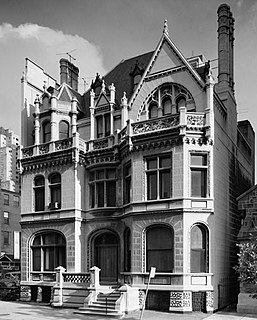
Theophilus Parsons Chandler Jr. was an American architect of the late 19th and early 20th centuries. He spent his career at Philadelphia, and is best remembered for his churches and country houses. He founded the Department of Architecture at the University of Pennsylvania (1890), and served as its first head.

The Paris Colonial Exhibition was a six-month colonial exhibition held in Paris, France, in 1931 that attempted to display the diverse cultures and immense resources of France's colonial possessions.

George Howe (1886–1955) was an American architect and educator, and an early convert to the International style. His personal residence, High Hollow (1914-1917), established the standard for house design in the Philadelphia region through the early 20th century. His partnership with William Lescaze yielded the design of Philadelphia's PSFS Building (1930–32), considered the first International style skyscraper built in the United States.

Wilson Brothers & Company was a prominent Victorian-era architecture and engineering firm established in Philadelphia, Pennsylvania, that was especially noted for its structural expertise. The brothers designed or contributed engineering work to hundreds of bridges, railroad stations and industrial buildings, including the principal buildings at the 1876 Centennial Exposition. They also designed churches, hospitals, schools, hotels and private residences. Among their surviving major works are the Pennsylvania Railroad, Connecting Railway Bridge over the Schuylkill River (1866–67), the main building of Drexel University (1888–91), and the train shed of Reading Terminal (1891–93), all in Philadelphia.

Albert C. Nash was an architect in Cincinnati, Ohio and Milwaukee, Wisconsin. He was a founding member of the Cincinnati chapter of the American Institute of Architects and served twice as the group's president, from 1873 to 1877 and 1882 to 1885. The Milwaukee Court House that was constructed in 1872 and demolished 1939, as well as St. Stanislaus Church in Milwaukee.

Herman Louis Duhring Jr. was an American architect from Philadelphia, Pennsylvania. He designed several buildings that are listed on the U.S. National Register of Historic Places.
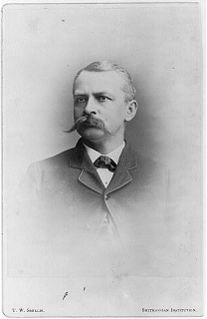
Paul Johannes Pelz was a German-American architect, best known as the main architect of the Library of Congress in Washington DC.

Richardson Brognard Okie Jr. (1875-1945) was an American architect. He is noted for his Colonial-Revival houses and his sensitive restorations of historic buildings.
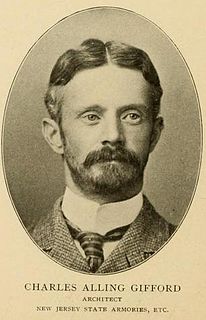
Charles Alling Gifford was an American architect and a partner in the New York City firm of Gifford & Bates. He is best remembered for his resort hotels, but also designed houses, churches, and five armories for the New Jersey National Guard.

Richard Bond (1798–1861) was an early American architect who practiced primarily in Boston, Massachusetts.

Independence Hall replicas are buildings, models and miniatures replicating or inspired by the design of Independence Hall in Philadelphia, Pennsylvania, United States.
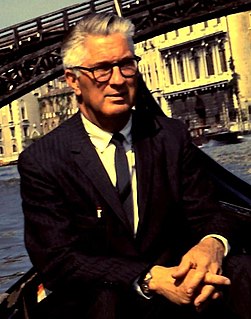
William Max Haussmann Sr. (1906-1988) originally from Rockledge, Pennsylvania, was an American architect who specialized in historical restoration and preservation for the National Park Service. His 32-year federal career had a number of highlights, as it ranged from restoration work for the Sesquicentennial Celebration of 1931 in Yorktown, Virginia, to the restoration/reconstruction project of Ford’s Theatre in the 1960s. He was a member of the American Institute of Architects (AIA).

Collingwood was a historic mansion in Fort Hunt, Virginia listed on the Fairfax County Inventory of Historic Sites. The mansion was first built in 1859 on a subdivision of George Washington's former River Farm, and significantly altered and expanded in the early 20th century. In July 2019, it was reported that the mansion would be demolished later that year.


























